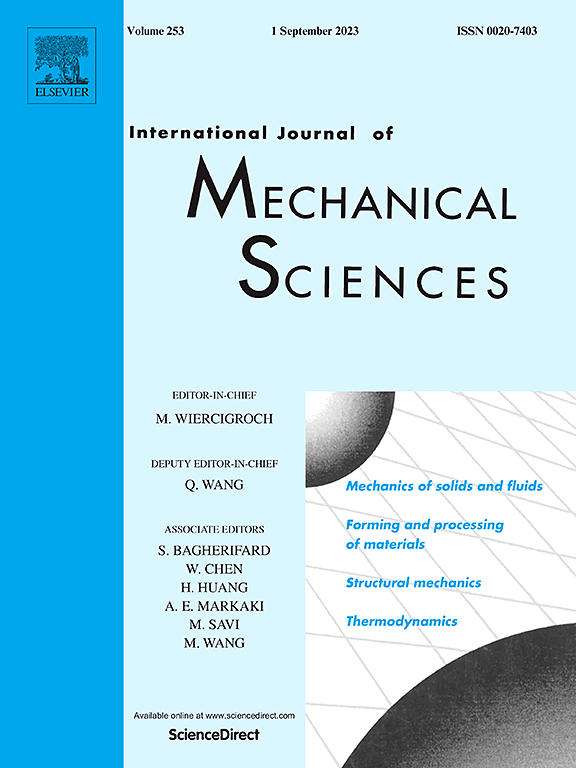Microstructural, interfacial, and frictional properties of TixCy /Ni composites
IF 7.1
1区 工程技术
Q1 ENGINEERING, MECHANICAL
International Journal of Mechanical Sciences
Pub Date : 2025-01-15
DOI:10.1016/j.ijmecsci.2024.109883
引用次数: 0
Abstract
This study examines the variation of TixCy/Ni composite properties during the polishing process using molecular dynamics simulation. Various material parameters and testing conditions, including abrasion depth, abrasion velocity, reinforcement particle derivatives, and reinforcement particle size, are examined, revealing both advantageous and disadvantageous impacts on feedstock characteristics such as supply force, friction coefficient, dislocation distribution, von Mises stress, and displacement vector. The findings indicate that increasing the velocity of the abrasive ball reduces the friction coefficient up to a certain threshold, beyond which it no longer improves and instead increases the density of dislocation distribution within the structure. Strong covalent bonding of TiC aids in reducing the friction coefficient and absorbing the force transmitted from the Ni matrix. Changes in the TiC reinforcement particle radius had minimal impact on polishing and normal force, as larger particles exhibited elastic deformation. However, TiC particles with 12 Å and 15 Å radii formed locked dislocations, significantly hardening the TiC/Ni matrix. This research offers key insights for optimizing TiC/Ni friction characteristics of composites and machining parameters for high-value product fabrication.

求助全文
约1分钟内获得全文
求助全文
来源期刊

International Journal of Mechanical Sciences
工程技术-工程:机械
CiteScore
12.80
自引率
17.80%
发文量
769
审稿时长
19 days
期刊介绍:
The International Journal of Mechanical Sciences (IJMS) serves as a global platform for the publication and dissemination of original research that contributes to a deeper scientific understanding of the fundamental disciplines within mechanical, civil, and material engineering.
The primary focus of IJMS is to showcase innovative and ground-breaking work that utilizes analytical and computational modeling techniques, such as Finite Element Method (FEM), Boundary Element Method (BEM), and mesh-free methods, among others. These modeling methods are applied to diverse fields including rigid-body mechanics (e.g., dynamics, vibration, stability), structural mechanics, metal forming, advanced materials (e.g., metals, composites, cellular, smart) behavior and applications, impact mechanics, strain localization, and other nonlinear effects (e.g., large deflections, plasticity, fracture).
Additionally, IJMS covers the realms of fluid mechanics (both external and internal flows), tribology, thermodynamics, and materials processing. These subjects collectively form the core of the journal's content.
In summary, IJMS provides a prestigious platform for researchers to present their original contributions, shedding light on analytical and computational modeling methods in various areas of mechanical engineering, as well as exploring the behavior and application of advanced materials, fluid mechanics, thermodynamics, and materials processing.
 求助内容:
求助内容: 应助结果提醒方式:
应助结果提醒方式:


